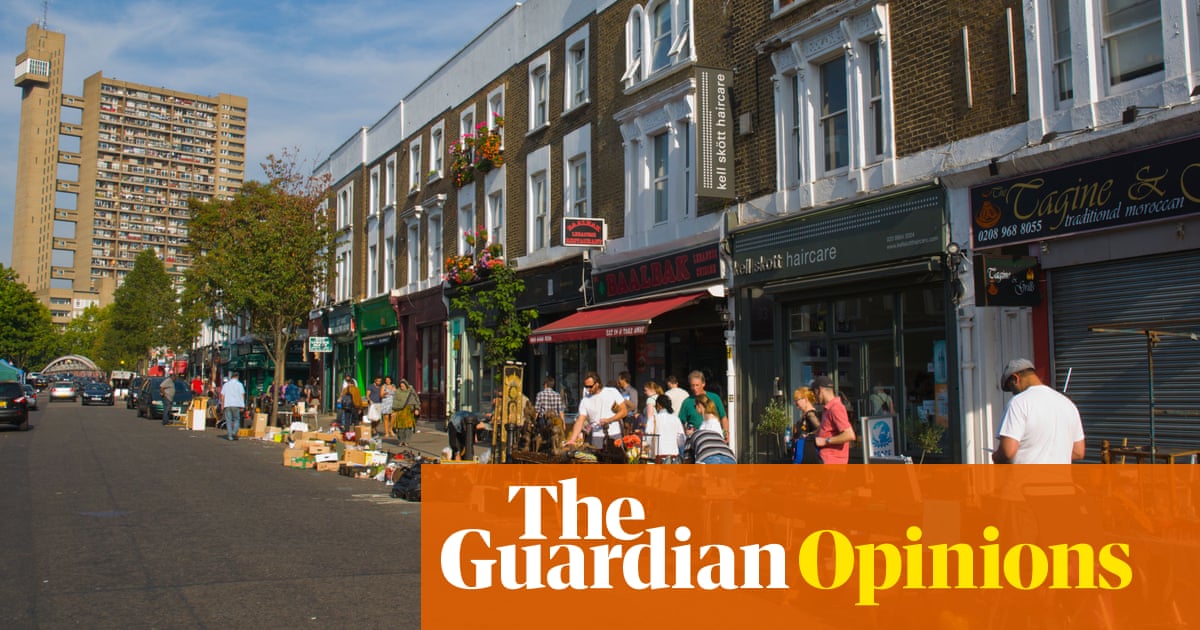What makes a neighbourhood restaurant? The phrase itself is evocative, bringing to mind the types of local trattorias or ocakbaşları or tavernas that punters return to regularly. The definition might vary from person to person, but surely a neighbourhood restaurant is defined by some combination of its longevity in the community, an accessible feel and affordable prices.
Over the past six months, though, I have seen the “neighbourhood restaurant” label deployed constantly in PR emails previewing a very different sort of establishment. The aim, I imagine, is to evoke a sense of cosiness and community – but there’s something off about it.
These self-proclaimed neighbourhood restaurants usually feel something like this: the walls are white, wines are “low-intervention” (meaning natural), and the branding is jaunty and Instagram-scroll friendly. “Seasonal ingredients” and “modern European” dishes abound. You might expect a neighbourhood restaurant by definition to respond to the specific needs of its neighbourhood, but a lot of these places actually tend to be pretty identikit, informed above all else by a more ambient, social media-aware aesthetic.
These clean, neat spaces recall the journalist Kyle Chayka’s concept of AirSpace, or, as he puts it, “the strangely frictionless geography created by digital platforms, in which you could move between places without … leaving the bubble of the generic aesthetic”.
In London, these so-called neighbourhood spots spring up in areas like Islington or Hackney, or any other place with a high concentration of upwardly mobile digital natives. These are consumers who snap photos of expensive pastries and hunt down dishes hyped up online, for whom food is yet another aspect of a curated, postable lifestyle.
As someone who has, in her time, queued 45 minutes for a falafel sandwich seen online, I am admittedly part of the crowd whose tastes these places are designed to appeal to. I don’t mind saying that some of what I enjoy is governed by what I see on my phone: I like pretty plates of crudo and thick slices of terrine that look lovely in a photo. Nor do I begrudge a savvy restaurant using the world’s biggest marketing platforms to its advantage (unless the food is rubbish). At the same time, neighbourhood restaurant rankles as a marketing term because it feels like it is often used by the kind of restaurants that often don’t have an awful lot to do with their local communities.
There is a likely reason behind the recent use of the term. Within food media there is a growing, but long overdue, appreciation of the food of migrant and working-class communities, hitherto overlooked by some in the mainstream. As a result of this emphasis on diversity, readers and diners have a sharper understanding of the roles restaurants play in their communities.
As far as I can see, then, “neighbourhood restaurant” can be deployed pretty cynically, to detract from the accusations of gentrification that are now frequently – and usually correctly – levelled at flashy new restaurant openings in areas where wealth disparities are high, and longstanding local communities continue to be priced out. But you can’t simply declare yourself a neighbourhood restaurant in a press release or social media bio and make it so. It is surely a status that is earned.
Actual neighbourhood restaurants – examples quickly plucked from my own recent dining experiences include east London’s brilliant Al Kahf, the jovial Bar D4100 in Nunhead, south-east London, or Kebabish in the Birmingham suburb of Moseley – rarely claim to be as such. They just are, because they’re placed to appeal to a wide range of punters and to serve them with a mix of affordability, local knowledge, quality and a welcoming atmosphere.
Lots of these restaurants integrate seamlessly because they’ve been started by local people – for instance, Dinner for One Hundred, the family business behind Bar D4100, started life in the founders’ mum’s garden during lockdown – or because they’ve made an effort to be a genuine part of the community, like east London’s Dusty Knuckle bakeries, whose youth programmes give jobs to young people in those areas looking for a new start.
A high-profile example of the way in which some “neighbourhood restaurants” are said to fall short of this standard is Straker’s, the chef Thomas Straker’s eponymous restaurant, which opened on Notting Hill’s Golborne Road in 2022. The restaurant is described on its own website as “serving a neighbourhood vibe” (a main will set you back about £30); but in July 2023, when Straker posted a photo of the restaurant’s on-shift kitchen staff, they were all white and male. Considering the venue in west London is on a street known for its Portuguese and Moroccan immigrant communities, the image was called out as tone-deaf. Critics asked why there had not been more of an effort to compile a staff team that was representative of the area.
Speaking to the Evening Standard, Straker said that while his business “can always be better”, he found some social media users’ insinuation that he and his chefs all looked the same “incredibly offensive to the point where … actually they should apologise”. In the same interview, the restaurateur said he had changed his hiring practices since the photo was taken.
Straker’s isn’t the only restaurant accused of just plonking itself down without considering the context. The growing practice is a symptom of our increasingly siloed cities, as gentrification rages on, and community spaces continue to close due to a lack of funding. There are, then, some labels that require responsibility: if you want the kudos of calling yourself a neighbourhood restaurant, the least you can do is actually act like one.






